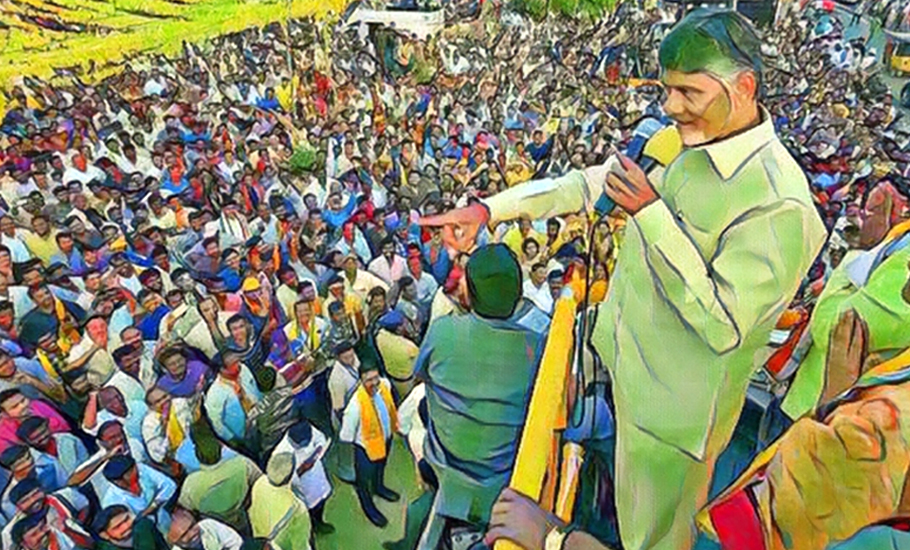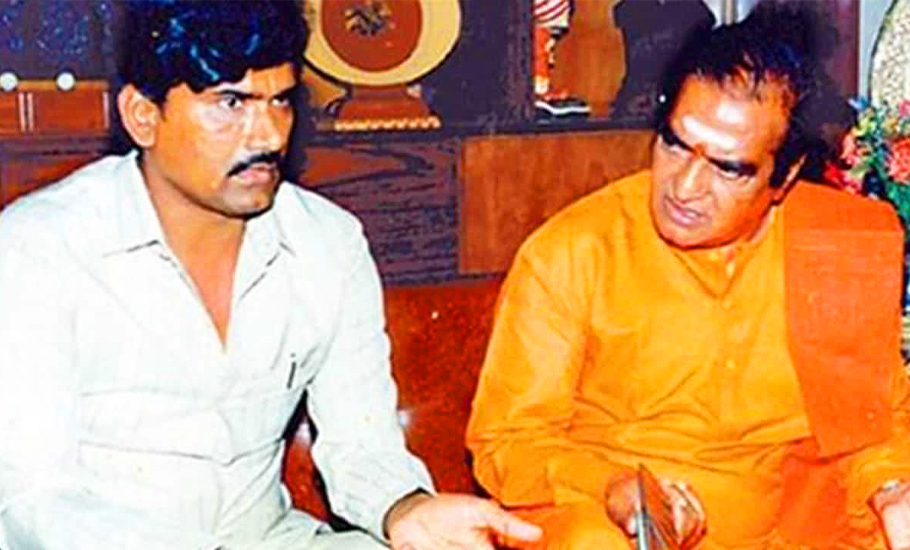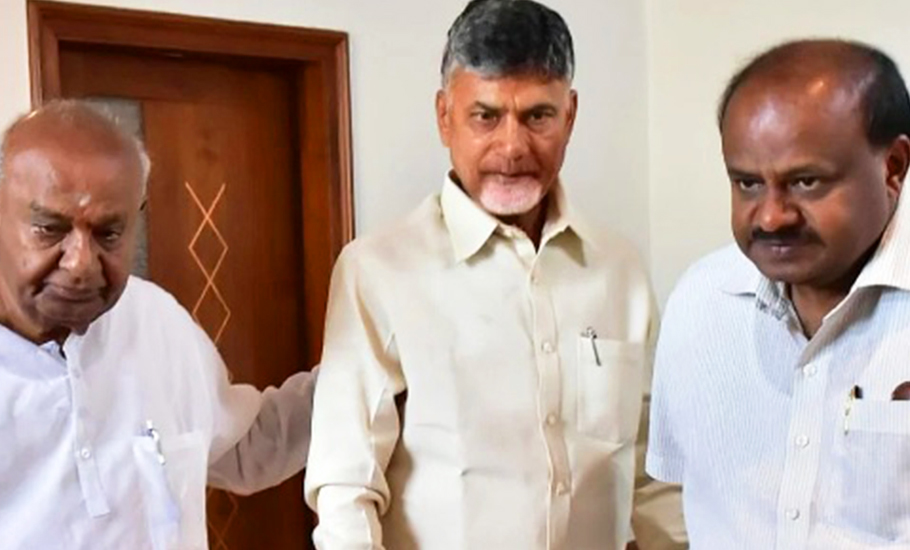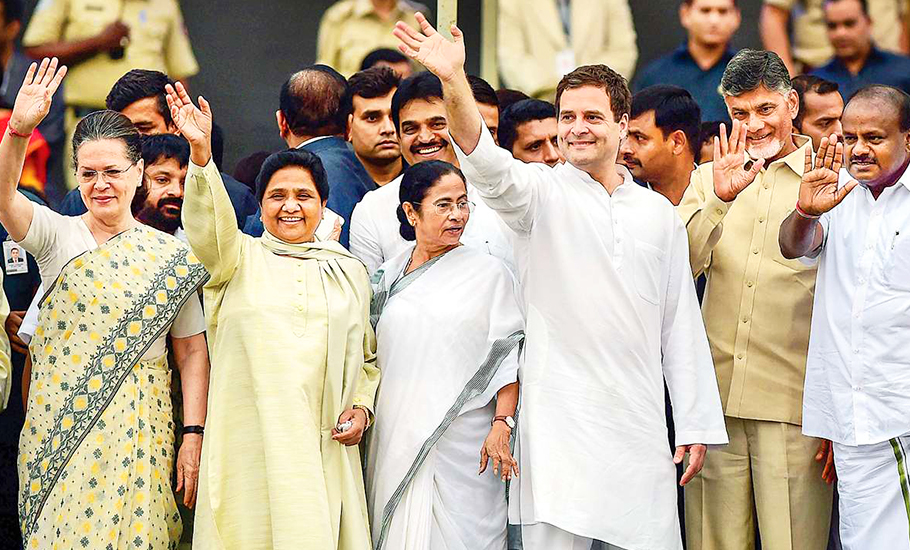
- Home
- India
- World
- Premium
- THE FEDERAL SPECIAL
- Analysis
- States
- Perspective
- Videos
- Sports
- Education
- Entertainment
- Elections
- Features
- Health
- Business
- Series
- In memoriam: Sheikh Mujibur Rahman
- Bishnoi's Men
- NEET TANGLE
- Economy Series
- Earth Day
- Kashmir’s Frozen Turbulence
- India@75
- The legend of Ramjanmabhoomi
- Liberalisation@30
- How to tame a dragon
- Celebrating biodiversity
- Farm Matters
- 50 days of solitude
- Bringing Migrants Home
- Budget 2020
- Jharkhand Votes
- The Federal Investigates
- The Federal Impact
- Vanishing Sand
- Gandhi @ 150
- Andhra Today
- Field report
- Operation Gulmarg
- Pandemic @1 Mn in India
- The Federal Year-End
- The Zero Year
- Science
- Brand studio
- Newsletter
- Elections 2024
- Events
- Home
- IndiaIndia
- World
- Analysis
- StatesStates
- PerspectivePerspective
- VideosVideos
- Sports
- Education
- Entertainment
- ElectionsElections
- Features
- Health
- BusinessBusiness
- Premium
- Loading...
Premium - Events

How Chandrababu Naidu is scripting resurgence, challenging those writing his political epitaph

On a day the world was busy ringing in the New Year, Telugu Desam Party (TDP) supremo N Chandrababu Naidu opened his party coffers announcing three families would get Rs 5 lakh each. The money was no New Year gift but a compensation for the lives of three women who were crushed to death during a stampede at Naidu’s Sankranti gift programme in Guntur’s Vikas Nagar. Ten days of campaigning...
On a day the world was busy ringing in the New Year, Telugu Desam Party (TDP) supremo N Chandrababu Naidu opened his party coffers announcing three families would get Rs 5 lakh each. The money was no New Year gift but a compensation for the lives of three women who were crushed to death during a stampede at Naidu’s Sankranti gift programme in Guntur’s Vikas Nagar. Ten days of campaigning by TDP workers for the programme and the lure of gifts brought in a crowd that the party’s volunteers failed to manage. While three women died, 13 others sustained injuries to their spines and legs.
The incident came barely four days after eight people were killed in a stampede during Naidu’s rally in Nellore. As Naidu began to speak, the crowd — running into thousands, gathered in Kandukuru town for the rally — moved forward to hear their leader speak. The ensuing chaos resulted in a stampede-like situation and some people lost balance and fell into an open drain.
In wake of the tragedies, Andhra Pradesh chief minister YS Jagan Mohan Reddy put the blame squarely on Naidu. The government then issued an order prohibiting political parties from holding public meetings and rallies on roads, including national highways, citing public safety.
While the order has ostensibly come in the wake of the stampedes, many say, Reddy government’s move is a bid to check the success of Naidu’s rallies against the YSR Congress Party (YSRCP) since November last year.
With eyes clearly set on 2024, Naidu started off with public meetings in Kurnool and Eluru in November, armed with the slogan, “Quit Jagan, Save AP”.
Just how seriously Naidu is taking the elections can be gauged from what the TDP supremo said at the rally in Kurnool on November 16. Raising an emotional pitch before the crowds, Naidu declared, “The 2024 elections would be his last if people did not elect the TDP to power.”
Asking people to ensure his victory, Naidu made a rather emotional pitch for votes, saying, “Will you bless me? If I have to continue in politics then you have to elect the party to power. If I have to stay in politics, go to the Assembly, and ensure justice for Andhra Pradesh then you have to elect TDP in 2024. Unless you ensure our victory in the next election, it may be my last election.”
Even as Naidu made clear that he is going to give it his all in the 2024 assembly elections to be held in Andhra and the Lok Sabha polls that will be held simultaneously, he raised political temperatures by making a quick visit to Khammam in neighbouring Telangana on December 21 and making it clear that his ambitions were not limited to Andhra alone.
The TDP’s show of strength in Telangana was the first since the crushing defeat it suffered in the 2018 state elections. With Naidu presenting a report card of his work for the Telugu states amid massive crowds, he made it known in no uncertain terms that those writing his political epithap could be jumping the gun.
Whether the strength of the crowds would convert into votes is a story that would unfold with time, but it does prove that those attempting to write off Naidu could be making the same mistake NTR made 25 years ago.
When Naidu outwitted NTR
The infamous ‘August coup’ against legendary actor-turned-politician NT Rama Rao by his son-in-law had all the elements of a political thriller and saw Naidu catapulted to the chief minister’s chair all in about 10-days’ time.
Having decided to pass on the reins of the party to his second wife Lakshmi Parvati, NTR returned to Hyderabad from Visakhapatnam on August 23, 1995, after addressing a series of public meetings as part of Prajala Vaddaku Palana (administration to the doorsteps of the people) across districts.
NTR was unhappy with the way Naidu had put up a big show in Visakhapatnam and there were talks that the TDP founder was about to sack Naidu — who held the portfolios of finance and revenue — from his Cabinet. Having sensed that the wind was blowing against him, Naidu started gathering with his group of MLAs at his chambers in the Secretariat. On August 24, NTR and Naidu had a heated argument that went on for well over three hours with the latter demanding that Parvathi be stopped from interfering in the government and party and the former staying adamant on passing his baton to Parvathi.
That night, MLAs supporting Naidu held an impromptu meeting to remove NTR as the leader of the Telugu Desam Legislature Party (TDLP) and elected Chandrababu Naidu in his place. So clear was Naidu’s writ that NTR reportedly found about the ‘coup’ only around 3 am on August 25. Before NTR knew it, Naidu had handed over a TDLP resolution to the governor, which removed NTR and elected Naidu as the TDLP leader.

NTR then launched a whirlwind tour of some districts to expose the ‘betrayal’ by his son-in-law, but there was not much response from the people. On September 1, 1995, Naidu took oath as the chief minister.
Rise and fall
But it wasn’t just the coup which established Naidu as a wily politician capable of throwing in surprises in his favour. His journey from Naravaripalle to Chief Minister’s Office is equally, if not more, surprising.
Born in 1950 to a farmer, N Kharjura Naidu, with hardly three acres of land in Naravaripalle, 20 km from the temple town of Tirupati, Chandrababu Naidu’s political plunge came when the country was going through Emergency. He started his political career during his college days by joining the Youth Congress. In no time, Naidu came to be a trusted loyalist of Sanjay Gandhi, Indira Gandhi’s eldest son, who was considered to be the ‘de facto’ ruler of India during the time.
Upon completing his post-graduation from Sri Venkateswara University in Tirupati, Naidu built a close rapport with NG Ranga, the renowned farmer leader, whose contributions to the peasant movement won him the Padma Vibhushan, through P Rajagopal Naidu. Rajagopal, who too was peasant leader, was a native of Chittoor district.
The association with NG Ranga won Naidu a Congress ticket for Chandragiri assembly segment in 1978. A retired government official and Naidu’s close aide during university days, wishing not to be named, credited Naidu’s success to his humble roots, meticulous planning and hard work.
“I was one among half a dozen of Naidu’s friends from the university who were invited for a lunch at his house in the run up to the assembly elections in 1978. We were asked to sit on a mat on the mud floor in his thatched house and served lunch by his mother. For someone with that humble background to rise to such a high position at national and even international level, it is amazing,” the retired official told The Federal.
Two years after serving that humble lunch to his friends, at the age of 30, Naidu was inducted into the Cabinet of Tanguturi Anjaiah as one of the youngest ministers.
While Naidu was climbing political ladders quickly through his associations, his personal relations were to provide a major boost to his career. In 1981, Naidu married Nara Bhuvaneshwari, the daughter of NTR and Basavatarakam Nandamuri. Nandamuri was NTR’s first wife.
Naidu came close to NTR when he was the cinematography minister in the Congress government in Andhra Pradesh. NTR had become a mass icon by playing roles of Hindu deities, joined politics and launched TDP to wipe out the Congress in the state.
Movie mogul NTR challenged Congress party’s monopoly in the state riding on the plank of Telugu pride by forming TDP in 1982.
Hurt by the ‘betrayal’, NTR once compared himself to Shah Jahan, the 17th-century Mogul emperor who was imprisoned by his son, and vowed revenge. Though NTR only alluded to Naidu as Aurangzeb, his critics have openly called him by the name though in a different context. They say, just like Aurangzeb saw the fall of the Mughal empire, Naidu oversaw the decline of TDP. As NTR never recovered from the shock and died a year later due to heart attack, Naidu got control both of the party and the CM’s chair.
Naidu, the CEO CM
As CM, a tech-friendly Naidu styled himself as the ‘CEO’ of erstwhile Andhra Pradesh and tuned Hyderabad into an IT hub that attracted major multinational tech giants such as Microsoft, IBM and Oracle.
The World Link magazine, published from Davos in Switzerland by the World Economic Forum, included him in its ‘dream cabinet’ of political leaders. In the 1990s, Naidu was described as ‘Cyberbabu’, ‘The Business Person of the Year’ and ‘IT Indian of the Millennium’ by newspapers and magazines, given his focus on technology-driven growth and the focus on IT sector.
Despite winning these titles, the Davos-trotting, reform-oriented, Naidu lost the title of Andhra chief minister in 2004. The progress of Hyderabad and Cyberabad did not resonate with the average rural voter, which led to the return of the Congress in the state.
But as many wrote off Naidu and the politics of city-centric development, Naidu swept the Andhra elections in 2014 with 102 of the 175 seats.
By 2014, people of the region had reconciled with the state’s bifurcation. Experts attributed the victory of Naidu to two reasons. First, people of coastal Andhra and Rayalaseema regions were determined to teach a lesson to the Congress for failing to meet promises. Two, they wanted to turn the truncated region into a well-developed state and wanted a leader who could steer it on that path. Given his track record, Naidu got people’s mandate.
With Naidu came the trust of the international organisations in the development of the region. The World Bank, the Naidu government, claimed agreed “in principle” to lend $1 billion for Amaravati development.
But around July 2019, shortly after Naidu lost power, the World Bank pulled out of the project without citing any reason. Media quoted sources to say the development followed widespread complaints by farmers of alleged forcible taking over of their fertile lands by the Naidu dispensation in the name of land pooling for capital development.
Experts say Naidu was punished for not being able to fulfil people’s aspirations in 2019, but among the factors that helped him win in 2014 were Telugu superstar Pawan Kalyan’s campaigning in his favour. Kalyan, who had floated his own Jana Sena Party, portrayed Jagan as the ‘evil force’ that could only cause harm to the interests of the new state and not take it anywhere.
There is no surprise then that Naidu is trying to woo both Modi and Kalyan in the run up to the 2024 elections.
He is also raising the development bogey to claim a return to the chief minister’s office.
Kingmaker
While Naidu is scurrying for allies now, in the 1990s, Naidu called the shots and towering leaders of the period such as Farooq Abdullah, Mulayam Singh Yadav and Harkishan Singh Surjeet loved to rub shoulders with him.
When the Congress under Prime Minister PV Narasimha Rao lost the election in 1996, Surjeet proposed Naidu’s name as the ideal candidate for the Prime Minister’s post from the United Front, a coalition of 13 non-Congress parties. But the TDP leader politely declined the offer and pitched for HD Deve Gowda as the Prime Minister, instead. The move earned him the sobriquet of being a “kingmaker”.

In 2002, Narendra Modi, then Gujarat chief minister, got a taste of Naidu’s stature. During that time Modi was at the receiving end of criticism for the Gujarat riots in which hundreds of Muslims were butchered. Naidu’s TDP was a constituent of the National Democratic Alliance headed by Atal Bihari Vajpayee. Vajpayee too was under criticism for not taking action against Modi in the aftermath of the riots.
Championing the cause of minorities, as convener of the NDA, Naidu powered with 29 MPs, mounted pressure on the Vajpayee government to show Modi the door. Modi was obligated to meet Naidu, who was camping in Delhi’s Andhra Bhavan at that time, seeking to soften his stand. But Naidu did not even allow Modi to get in.
In October 2021, when Naidu landed in the capital seeking an audience with Amit Shah, Union Home Minister and Modi’s right-hand man, he was denied audience. While Naidu had come with a demand to impose President’s Rule in Andhra after a spate of attacks on TDP cadre, political experts believe the meeting was an attempt to cosy up to the BJP once again, after walking out of the NDA coalition in 2018 on the demand for a ‘special category status’ for Andhra Pradesh.
Nobody’s baby, literally
Reduced from 29 to just three MPs, Naidu is literally no one’s darling right now. No combination of an anti-BJP alliance whether initiated by Mamata Banerjee, or Nitish Kumar, or Sharad Pawar, or K Chandrasekhar Rao in the run up to the national elections in 2024 has factored in Naidu. A fact that must be hard to swallow for Naidu who just four years back in 2019 was an important rallying point for floating an anti-BJP Mahagatbandhan.
Many believe that Naidu has lost his appeal because of his inability to hold on to any ideology or give shape to one of his own. Jumping ships for political convenience has left him anchorless.
“Inconsistency in his actions and policy-making is the root of his downfall,” K Viyanna Rao, former vice-chancellor of Nagarjuna University, told The Federal. The TDP was formed on the plank of regional pride and anti-Congressism was at its core.
Naidu, on the contrary, began his political career with the Congress and switched to the TDP. His walkout from the NDA combine, in 2018, on the question of ‘special status’, was seen as too little, too late. Worse, the party had its ideological mooring thrown to the winds when, under Naidu’s leadership, it aligned with the Congress before 2019 elections.
Naidu stitched up an alliance with the BJP in 1998, sailed with that party till 2004 and ditched it latter citing the Gujarat communal riots as the reason. He went back to the BJP in 2014, which ironically had Modi at the helm, and then snapped ties with it right before the 2019 elections. Naidu is once again craving for an alliance with the BJP to take on his mighty rival Jagan Reddy.
He straddles from one end to the other for short-term gains, say his critics.
His stand on the state bifurcation and on the question of special category status for his home state is also cited as a pointer for his policy inconsistency. Integrationists in his home state still feel his “two-eyed” theory, aiming to deliver justice to both Andhra and Telangana caused immense harm to the Andhra region. Naidu had claimed that both Andhra and Telangana were like his two eyes in a bid to underline that he cared for the people of both states.
Is a bounce back possible?
When planning a comeback, the TDP leader finds a silver lining in the massive response he is drawing for his current string of rallies across the state as an obvious result of the anti-incumbency caused by the three-year Reddy rule.
“Mere anti-incumbency and attendance of huge gatherings will not translate into votes for the opposition parties. The election outcome in Gujarat is a live example to suggest this fact,” said Raka Sudhakar, a political analyst.
“If Naidu wants to win the coming election, he needs to get his act together to channelise the anti-government sentiment into votes,” Raka added.

If he wishes to re-establish his footprints in national politics, Naidu has to get a national status for his party by meeting the Election Commission’s guidelines by way of securing required number of seats and votes in three-four states, besides winning the election in Andhra, he said.
To find political relevance, Naidu needs to not just regain lost ground in Andhra Pradesh, but also claim new ones in Telangana, Karnataka and Tamil Nadu.
At 72, does Naidu have enough appetite for success to put in the required hard work.
His sudden appearance in Khammam on December 21 shows Naidu certainly hasn’t thrown in the towel yet. Naidu is said to be buoyed by the success of TDP’s annual conclave, Mahanadu. The crowds at his recent rallies have acted as a shot in the arm. To add to this, Naidu’s son, Nara Lokesh, will start a 4,000-km march to woo the youth this month. Titled ‘Yuva Galam’, the march will be a massive outreach aimed at the youth.
A lot of whether 2024 gives a fresh lease of life or will ‘Aurangzeb’ see the sun set on his party will be decided by what happens in 2023.
